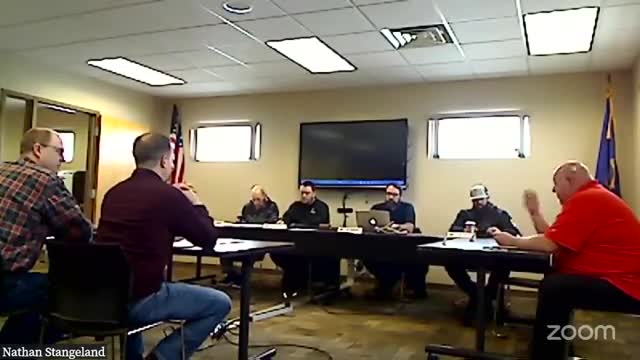High School Faces Hot Water Crisis as Engineers Uncover System Failures and Design Flaws
December 11, 2024 | WILLISTON BASIN 7, School Districts, North Dakota
This article was created by AI summarizing key points discussed. AI makes mistakes, so for full details and context, please refer to the video of the full meeting. Please report any errors so we can fix them. Report an error »

In a recent special board meeting held by the Williston Basin School District 7, a detailed discussion unfolded regarding significant plumbing issues affecting the culinary and nutrition labs at the high school. The meeting, which extended for nearly 25 minutes, focused on the challenges of frozen water lines, unreliable domestic hot water, and malfunctioning kitchen equipment.
The heart of the problem lies in the culinary lab, where frozen water lines have been a persistent issue. A thermal imaging investigation revealed that cold air was infiltrating the chase—a designated shaft for mechanical piping—due to inadequate air circulation. To combat this, the team proposed installing transfer grills to allow conditioned air to flow through the chase, a solution they believe will effectively resolve the freezing problem.
However, the hot water supply has proven to be a more complex challenge. The system, designed to deliver consistent hot water, has been plagued by intermittent failures. Investigations indicated that the issues stemmed from a combination of operational, maintenance, and design flaws within the existing plumbing infrastructure. Staff training was initiated to address improper use of soap dispensers that contributed to mixing hot and cold water, while a malfunctioning master mixing valve was identified as a critical point of failure.
The board learned that the existing hot water system had not been adequately maintained, leading to scaling and operational inefficiencies. Plans are underway to replace the faulty mixing valve and install a new circulation pump to enhance hot water distribution throughout the facility. This dual-pump system aims to improve flow and ensure that hot water reaches all necessary areas, including the culinary lab.
As the meeting concluded, the board expressed optimism about the proposed solutions, emphasizing the importance of ongoing collaboration between the district and engineering teams. With these measures in place, the district hopes to restore reliable hot water service and enhance the functionality of its culinary and nutrition programs, ultimately benefiting students and staff alike.
The heart of the problem lies in the culinary lab, where frozen water lines have been a persistent issue. A thermal imaging investigation revealed that cold air was infiltrating the chase—a designated shaft for mechanical piping—due to inadequate air circulation. To combat this, the team proposed installing transfer grills to allow conditioned air to flow through the chase, a solution they believe will effectively resolve the freezing problem.
However, the hot water supply has proven to be a more complex challenge. The system, designed to deliver consistent hot water, has been plagued by intermittent failures. Investigations indicated that the issues stemmed from a combination of operational, maintenance, and design flaws within the existing plumbing infrastructure. Staff training was initiated to address improper use of soap dispensers that contributed to mixing hot and cold water, while a malfunctioning master mixing valve was identified as a critical point of failure.
The board learned that the existing hot water system had not been adequately maintained, leading to scaling and operational inefficiencies. Plans are underway to replace the faulty mixing valve and install a new circulation pump to enhance hot water distribution throughout the facility. This dual-pump system aims to improve flow and ensure that hot water reaches all necessary areas, including the culinary lab.
As the meeting concluded, the board expressed optimism about the proposed solutions, emphasizing the importance of ongoing collaboration between the district and engineering teams. With these measures in place, the district hopes to restore reliable hot water service and enhance the functionality of its culinary and nutrition programs, ultimately benefiting students and staff alike.
View full meeting
This article is based on a recent meeting—watch the full video and explore the complete transcript for deeper insights into the discussion.
View full meeting
